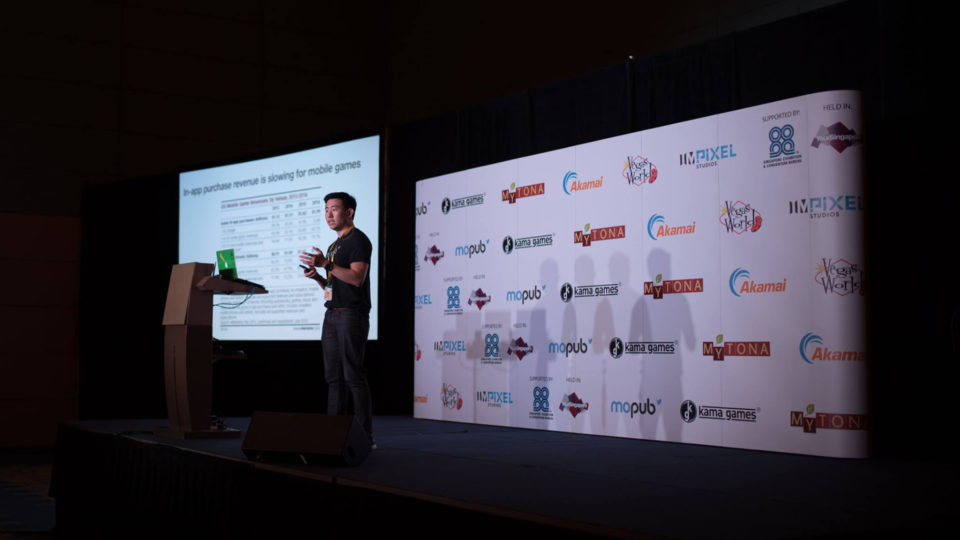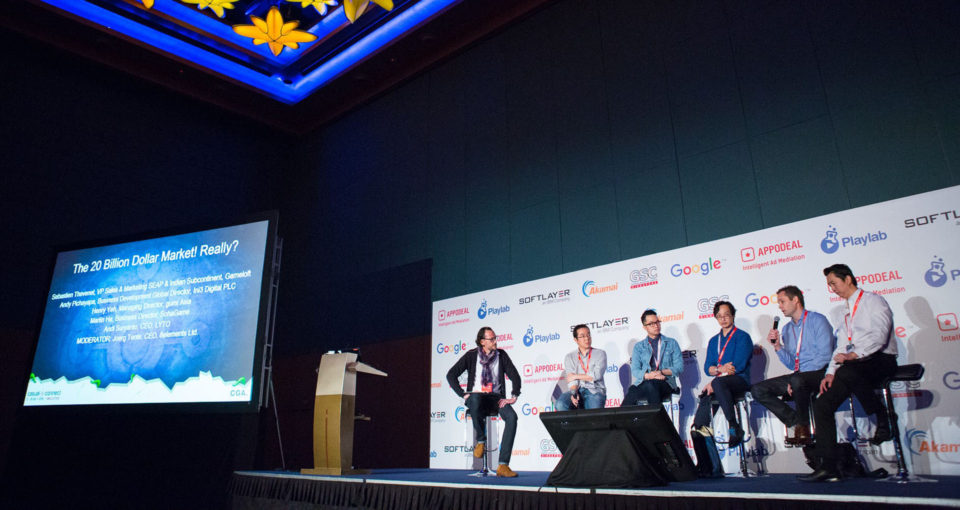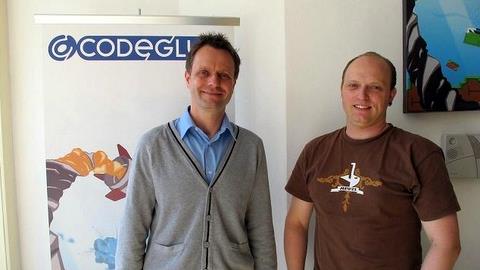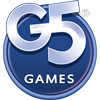The time for Asian-Pacific mobile app publishers to switch to programmatic methods for monetizing. As the Head of APAC Platform Sales for MoPub, Simon Toh spoke about the need for developers to take advantage of mobile programmatic to monetize risk so that they don’t miss out on differentiated demand, revenue and control user experience. Simon stated, “To grow your top line, it is important for you to find new ways to monetize more of your users preferably all of them and not be overly dependent on in-app purchases.” During his talk at Casual Connect Asia, Simon also delved into what the beneits for publishers which included a glimpse into innovative ad formats and spend trends in the APAC market. To learn more, tune in to the video below of his full session.
main
Asia 2016Video Coverage
Andy Pichayapa and Reaching Indochina’s Mobile Market | Casual Connect Video
Join Andy Pichayapa of INi3 Digital and other publishing professionals in a panel from Casual Connect Asia. This panel (called The 20 Billion Dollar Market! Really?) raised a lot of questions on the international side of the mobile games business. One of the big questions was: Who is making money in this market and how? They discussed strategies from a publisher’s perspective as well as what a developer should deliver and be prepared for before searching for a publisher.
ContributionsPostmortem
The Global Game Jam and beyond: FYI (2011)
The “Global Game Jam and beyond” series sheds light on the few brave Global Game Jam (GGJ) teams that have decided to take their GGJ projects to the next level and continue development after those challenging 48 hours. We ask each team to tell about their experiences, share learned lessons and offer advice on their attempt to turn their Global Game Jam project into a full-fledged commercial product.
The Global Game Jam version of FYI was developed by the Dutch game studio Digital Dreams and two friends of the studio. The concept of the game is based on infographics. Every action by the player results in changing bars and pie graphs, which make up the game world. After the Game Jam, FYI won the Independent Propeller Award for Best Design. The game has grown a lot since the team decided to continue development. Digital Dreams plans on releasing FYI to the public and is currently talking to publishers.
What triggered your initial consideration that your game was worth continuing with?
It felt right. From a gameplay point of view, the concept just felt right. Besides that, we had been able to reuse a lot of the code from previous projects at the Game Jam, so the prototype was already fairly complete as far as Game Jam standards go. We were lucky that our main programmer had recently worked on a similar game in terms of camera, physics and collision. Because of this we were able to go just a little bit further with our game than the average Game Jam game.
What do you believe was the main element of your game that allowed it to be commercially viable?
Even though it’s probably cliché and a common answer, we believe the uniqueness of the gameplay and the aesthetics makes FYI commercially viable. The gameplay is unfortunately really hard to explain in pictures and words, it’s something you should play for yourself in order to understand the concept completely. As far as aesthetics go, we use infographics as a visual style, which makes it stand out as well. This was also the main inspiration for the concept.
How did you manage the aftermath in your team?
Four out of six persons from the Game Jam team were already part of Digital Dreams. The biggest realization of the team members from the company was that we could produce so much in so little time. That’s why Digital Dreams decided to switch to developing smaller projects after the GGJ. That was a valuable lesson.
Another valuable lesson was about handling the IP. We talked to the other 2 GGJ team members and discussed our intent to possibly continue working on the GGJ prototype. In hindsight, this wasn’t enough. We should have done more than just talking. It’s never a bad thing to have things like this in black and white to avoid problems later on, especially before any money comes into play.
It made sense for us to continue as a company, because we really wanted full dedication and commitment. Basically we wanted to invest a lot of time, which is hard to achieve when working together part-time with people that have lots of other stuff to do. We also knew from the start we were taking a huge risk as Digital Dreams by investing our resources into this rough prototype, because we didn’t have the slightest idea if it would pay off some day. We really started to believe in its commercial viability after we won the Indie Propeller Award for Best Design.
What were the most important experiences/learned lessons and/or challenges that you had while further developing your game?
We knew the project would take around a year, making it the largest project to date for Digital Dreams. We did not have the money to do that. Selling the game to a publisher was the follow-up challenge. But it is great to get experience in this important aspect of the game industry, and learn how to pitch to other parties. It took quite a while before we convinced a party to actually invest in us though. This is one of the hardest things to achieve as a new start-up.
In your case, what did you learn from getting the game out to the public?
Well, the game isn’t public yet. But when we showed co-developers, other friends and publishers one of the prototypes we made, we saw how hungry they were for more. You just know you have something worth spending your time and effort on when people want more. This sure gave us confidence to continue development on FYI.
What kind of tips would you give to other GGJ participants who might decide to continue developing their project?
Make properly signed agreements with your teammates shortly after or even during the GGJ. It’s not 100% necessary from a legal point of view, but it might help avoid some issues once you decide to continue with the project.
Also, it helps to know all the team members, this will make it easier to discuss this option, and you’ll know with what kind of people you’re getting on board with. It kind of goes against the GGJ spirit - getting to know new people - but if you think you want to continue work on a GGJ prototype, it’s a smart move.
Last but not least: Have fun! Creating something cool with friends in such a short time is one of the most fun experiences we can think of. So don’t worry too much, just give it your best and enjoy the ride!
You can find more information on FYI on Digital Dreams’ website. Currently, Digital Dreams is working on a big project, which will be announced in the coming months. Stay updated through Twitter: @DigitalDreamZzz
Video Coverage
IGDA Summit videos at Casual Connect: how Shadowrun fared on Kickstarter, tips to get publishing deals and becoming a better negotiator
IGDA Summit 2012, held in conjunction with Casual Connect Seattle 2012 conference, did not hold back in its efforts to benefit the developer community. As the largest non-profit membership organization assisting video game industry members, IGDA works to further improve that industry. Using the best content, industry leaders from different disciplines worked to enhance the developer community. The summit offered learning opportunites in over 50 sessions and panels. Here is a small sample of what we found there.
Pitching Shadowrun on Kickstarter
Stand out, follow these 10 tips and get a publishing deal
Whether your investors are brought into the fold via crowdsourcing or through more traditional means, it’s important to know how-and when-to stand out amongst a sea of hungry upstarts. John Young of Perfect World Entertainment discussed this and more during a panel dedicated to getting your game funded and published. His presentation proved to be very enlightening for the young entrepreneur as it focused on pragmatic real world advice that can be useful from the earliest stages onward. In addition, Young advised new developers to time their pitches correctly.
Negotiate your way to better business deals
One skillset that is absolutely essential to the independent developer is the art of negotiating a business deal. Tom Buscaglia of The Game Attorney PC was on hand to deliver a rousing panel aimed at scoring attendees the best deal they can get out of a complicated process. He furiously championed the rights of the individual creator, cautioned them against being a “spineless worm” and reminded attendees that they too held power in their business relationships. Buscaglia also warned the audience to make sure the contract they are given accurately reflects the negotiated terms.
IGDA Summit 2012 pulled out all the stops to bring the best content to the table. To hear from more speakers, visit the Casual Connect website or the Casual Connect YouTube Channel.
Studio Spotlight
Studio Spotlight: Codeglue in Rotterdam
Codeglue’s CEO Peter de Jong and CTO Maurice Sibrandi recently celebrated the very special occasion of running their studio for an entire decade. The two founders have been friends since highschool and went to higher technical college together to study computer science. Their close friendship led them to create their own game studio in the Netherlands, Codeglue, with a focus on mobile games and applications. We recently sat down to talk with both gentlemen about the celebratory occasion, developing CD-i games, early adopting XNA and balancing passion with need.
The Dutch pride of CD-i
Back when De Jong and Sibrandi were just starting with their technical engineering degrees, the Dutch company DIMA (‘Dutch Interactive Media Associates’, red.) paid a visit to our department and gave a presentation about internships to make games. “Maurice and I had similar interests, so we quickly decided to both do it,” De Jong recalls. “There was no Dutch game industry back then. There were some studios making CD-i games, that was it.” Already making games themselves on their Amigas, De Jong and Sibrandi didn’t have a breakthrough by themselves yet. In 1993 both decided to take on that internship and work on CD-i titles.
After graduating from university, the duo continued to work at DIMA. Back then the company became well-known for producing some of the more popular CD-i games. The studio’s main objective was to produce low-budget CD-i games in relatively short production times. While at DIMA, de Jong and Sibrandi worked on titles such as Family Games, Christmas Chrisis and Christmas Country. The studio would later go independent and rename itself to ‘Creative Media’ after Philips pulled the plug from it’s CD-i production.
Glued together
When CD-i became unpopular, De Jong and Sibrandi spent a couple of years working IT jobs. In 2000, the dynamic duo took the step to found their own company and started working in the evening hours. In 2002, they finally took the step to go full-time with the company and focus on mobile game development. A lot of games were developed in cooperation with Dutch developer Two Tribes, who gained international fame with their Toki Tori franchise.
“We were always lucky that we were allowed to concentrate on the main reference handsets, which were only between 6-12 different types,” De Jong recalls. “The publisher would then deal with the other 380 types.” The number of handsets would later end up reaching far beyond 12, which forced De Jong and Sibrandi to seriously reconsider the company’s direction.
“We spent more time porting and adapting games than working on the gameplay,” he added. Codeglue would also start focusing on mobile multiplayer games. “We tried it together with a publisher, but the market clearly wasn’t ready for it. The operators had a lot of problems between them, communication went wrong, problems. The attempt did show a lot of promise.”
In 2007, the Codeglue team started working on Rocket Riot, their award winning XBLA title. “We spent the first half year trying to make it a mobile title, but it didn’t really fit with the concept,” De Jong recalls. “So we decided to turn it into a Xbox Live Arcade title.”
The team continued to build a prototype, pitched it to several publishers and Microsoft. “After the third time we talked to Microsoft, we were green lighted and received a slot on Xbox Live arcade,” At that time, we could’ve just published the game ourselves, but we needed the money to develop the game in the first place. We talked to publishers such as Ubisoft, THQ and Konami. All three were interested in the game, but also because we scored a slot with Microsoft. THQ was the fastest and most concrete with their contract. Their conditions were ok, so we partnered up with THQ.”
The XNA early adopter
When Codeglue actually started working with XNA, the toolset was barely out of it’s beta stage. “It’s a very cool technology and we had no problems making the game, but we experienced some serious delays during development.” Riot eventually took two years to develop.
Due to the delay, the project also became a financial challenge for the studio. With a full focus on Rocket Riot, alternative revenue streams were also found in making iPhone games. “Apple changed the market in one blow,” De Jong argues. “Offering fast mobile Internet made it a common thing with a flat fee.” Tackling the upcoming market, Codeglue used it’s mobile game know-how to dive into iPhone development. “While the industry was in a heavy dip, developing for the iPhone helped us get through that gloomy period.”
Codeglue currently spends a hefty portion of their office hours working on Playstation Home assets. “This also was the result of the financial crisis at first,” De Jong explains. “It became more serious and we’ve developed more things in Playstation Home.” Codeglue recently also received their own store inside Sony’s online service to sell their assets. The plan is to continue with developing for PS Home while it is still generating a satisfying revenue rate.
One would think that there is no real market for micro transactions on Home, but Codeglue has proven otherwise. The service packs quite the crowd. “Very few numbers have been made public,” De Jong admits. “We can’t tell you anything about the ones we know, but you’d be amazed how many people use it.” For Codeglue as a small developer, the hundreds of thousands of monthly unique visitors is good enough to keep developing for Sony’s virtual world.
“We’ve always worked with the publisher/developer model.” De Jong says. “But small developers like us have to focus on reaching the consumer directly instead.We have to start making sense of marketing and other things to go from developer to developer/publisher.” The Playstation Home store one of the first baby steps that is bringing the company closer towards that goal.
Balancing passion with need
The work on Playstation Home has changed from a financial supplement into a creative output for Codeglue. “We’re in the phase of going back to devote ourselves to developing what we want,” De Jong confirms. “It’s been a tough period. We’ve talked to the entire team about the need to sometimes work on things that are less fun than developing your own game. Everyone knew about the situation and the financial crisis. I’m just happy we were able to keep everyone together and avoid any problems.”
De Jong sees Codeglue’s future in expanding the studio’s horizon to other platforms, creating separate units that focus on either PSN, XBLA, mobile and Facebook. “Our ambition is to develop a cross-platform game,” De Jong admits. “Not something stand-alone on the iPhone, but something that really connects.”
Codeglue second step towards becoming directly connect with their consumers is their development of Ibb and Obb in cooperation with the small Dutch indie studio Sparpweed. “It’s our first project on PSN, so it will be quite the learning experience,” De Jong admits. “Having one successful XBLA title in their pocket sadly isn’t enough to give any publisher enough confidence to work with you.”
Going the digital way
The adventure to build their first XBLA title with an unfinished XNA toolset brought about some wise lessons for Codeglue. “Next time we’re working on a project and a fancy new technology strolls by, we’ll make sure it’s proven before,” De Jong says. “We could’ve chosen to use the Unity engine to make a PSN title, but something like that hasn’t come out yet. I’d like to wait see one or two Unity based games come out first, so I know for sure that the worst wrinkles in the software are dealt with. Somebody else will have fixed it, saving you a lot of time and money in the process. My advice to other small devs is to wait and use technology that is already proven. If you’re the first and can experience the marketing push from Unity as well, it might result in something positive. Then again, that’s not a luxury we can all enjoy.”
The Rocket Riot project ended up teaching their technical staff a lot as well. “It was very stimulating for our programmers,” De Jong admits. “They were able to work directly with the technical staff from Microsoft, you’re involved both technically and innovatively with the toolset. But if you have to run a company, it’s not the wisest of decisions.”
Over the hill
After ten years, it becomes clear the way De Jong and Sibrandi shaped Codeglue was strongly based on the ups and downs they’ve had in their personal working experience after they spent their initial entry in games within small multimedia studios with small creative teams. “We even ended up rolling into IT for three to four years,” De Jong recalls. “We had a company phone, car and laptop, the works. The environment simply didn’t fit us.”
With founding Codelgue, De Jong and Sibrandi strived to have a fun workplace where creative people would feel at home. The original Rocket Riot, published by THQ, sadly did not receive a very big push by the publisher itself. As a result, De Jong and his team decided to connect with the game press themselves. With success. Rocket Riot ended up attaining critical acclaim, a solid 8.0 on Metacritic and very positive reviews by media outlets such as IGN, Gamespot and Giant Bomb.
“We tried to connect with the game press ourselves, arranged a lot of reviews and competitions,” De Jong recalls. “We were lucky to also receive great reviews.”
The experience with THQ have given De Jong a solid idea of how he would do it himself. In this day and age, a direct connection with the consumer isn’t that hard to attain anymore, even for a relatively small studio as Codeglue. The consideration to self-publish has culminated into the development of Ibb and Obb. “We operate very openly and show our audience the first prototypes on Facebook, trying to get people to follow us,” De Jong says. “With Rocket Riot, we were relatively late with this and tried to still hype the game after launch.”
Self-publishing
Pitching the original prototype for Rocket Riot and building up a relationship with Microsoft in the first place wasn’t a typical walk in the park for the studio. Luckily, the deal with THQ allowed Codeglue to keep the rights to the IP and resulted in Rocket Riot coming to Windows 7 Mobile and an upcoming version for the iPad.
“We walked around with the prototype for almost a year,” De Jong admits. It took us quite some time. Do visit the big international events like the GDC, E3 and Gamescom. Approach the publishers. That’s where you get the most business, especially if you want to work with a major publisher.”
De Jong simply reached out to different publishers by e-mail, with success. “It always works,” he says. “There’s always someone at an event looking for a new project. It’s never impossible to end up with the right person there.”
With the desire to take over publishing themselves, the need for Codeglue to find the necessary funds and internal structure to facilitate that is higher than ever. De Jong hopes that the sales on Playstation Home will fuel that desire significantly.
Codeglue is currently working on Ibb & Obb for PSN in collaboration with Sparpweed.
Image credits: Else Kramer assigned by the Rotterdam Media Commission










